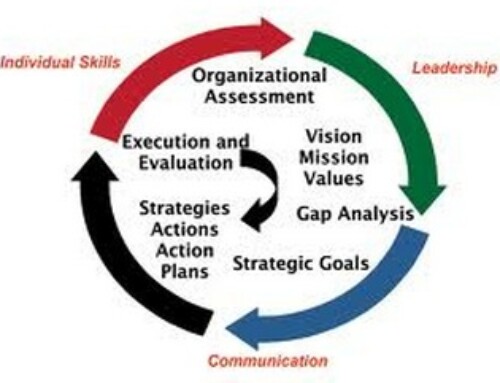The MLS industry faces rapid consolidation within the next few years. In just the last couple of years, the WAV Group estimates that the number of Multiple Listing Services firms have shrunk by about 15 percent, from about 750 to some 650 today. And that’s just the beginning.
This is not a new business phenomenon: the energy industry over a 20-year period, from 1995 to 2015 has shrunk by half. In travel today, 16 cruise ship brands are owned by just three firms, as are the nine major rental car company brands. Only 7 hotel conglomerates own the 80 hotel brands that dominate our travel and leisure market. The biomedical-pharmaceutical industry in 30 years saw a 70 percent contraction, from about 100 companies to 30.
But perhaps some of the greatest lessons in consolidation for the MLS industry can be learned from the banking industry. From 1984 to 1990, the number of banks slipped from a high of 14,500 to 12,300, a 15 percent drop. Today, there is fewer than half that number – 5,400 commercial banks, and another round of bank consolidation is being predicted. Most importantly, the top 10 banks hold 50 percent of all assets.
Consolidation in the thrift or savings and loan (a.k.a. savings bank) industry has been perhaps the most dramatic. At one time, there were as many as 5,000 savings and loans in the U.S. and today, that number is fewer than 800. As someone who spearheaded the on-the-ground Public Relations efforts on one of the nation’s most active players in this consolidation phase – Great Western Bank – there are many PR lessons that the MLS industry can learn, including how to manage the many internal and external risks that consolidation uniquely possess.
An Overall Communications Strategy
A lot of things will happen throughout the consolidation processes when two or more MLSs are merging that you cannot anticipate. But one of the most important elements you can manage within the consolidation process is communications. What you say internally and externally, whom you say it to, and the channels you select to communicate are crucial to a successful consolidation.
Having an organized, well-thought-out communications strategy that all parties adhere to is an essential first step. Thinking through the entire consolidation process from start to finish and the juncture points that you will need to communicate both internally and externally to certain audiences helps you anticipate the future. It also will help you minimize risk. Being ready to handle the “what ifs” by crafting a plan that incorporates these possibilities up front also minimizes risks.
For example, Great Western had a merger strategy with a comprehensive communications plan that was largely replicable for every merger. The PR strategy was flexible enough to adapt to the nuisances of a particular deal and a geographic location, but also rigid enough not to miss any of the core elements that were crucial to repeating success.
Think internal first
Too many businesses worry, PR-wise, about leaks of news of a consolidation in advance of the timed formal announcement that they immediately focus on the external communications planning. They spend so much time on the “what ifs” they forget to spend enough time flushing out a solid internal communications strategy.
Knowing what to say to your team, how to say it, when to say it, how much to say, how often to say it and all the channels you must use to make your messaging work effectively means all the difference in keeping the best people to stay after the consolidation or watching them being the first to jump ship. Because that’s what’s most likely to happen if you don’t pay attention to your people first: the best leave first. And when the best people leave, everybody else will see that, and what message does that send to the rest of your team? Understanding the importance of your internal communication strategy and properly planning it and executing it is paramount to a successful consolidation.
External risks can be minimized
As someone who was on the front lines of some of the largest health and failed thrift mergers back in the most rapid period of consolidation of the savings and loan industry, I know deeply the external risks that come with consolidation. I was blessed. I worked for the one financial giant – Great Western Financial – that truly took care of the employees of the companies we acquired. GW had the most generous severance package in the industry. As the second largest acquirer of failed thrifts from the Resolution Trust Corporation in the U.S. – only Nation’s Bank (now Bank of America) did more – and everyone at a thrift offered by the RTC was hoping back in those days that GW and not someone else would be the purchaser.
The external communications strategy at GW was textbook PR. I was on the ground and we became so active in the state and buying several of the biggest healthy (SunPoint in West Palm Beach) and failed (The First FA in Orlando) and notoriously failed (CenTrust in Miami) that navigating the live press coverage with local TV press crews all onsite, meeting with community leaders of local nonprofits and governments, and trying to avoid the foibles of our competitors whose press coverage after a merger included comments from angry customers and angry fired-on-the-spot employees. We almost never had either, because we had an external PR strategy that was well planned, well coordinated with the consolidation partner and well executed by everyone.
Being ready when thing don’t go as planned after the consolidation is done
And finally, what we can learn from the consolidation lessons in the banking and thrift industry is to be well prepared to handle things when they don’t go as planned, including a well thought out crisis communications strategy.
One example comes from The First FA merger in Orlando, a well-loved local savings bank. When GW took them over, we had promised, as we had done with other acquisitions, to continue to provide support to the same community non-profits that The First had been supporting for the next year. After that, we would, as we did in all our markets, evaluate our giving priorities and continue to support those nonprofits that matched our corporate giving strategy and charter.
Nearly every other financial institution simply ended the charitable giving, in most cases, immediately. At the time we were praised for this by all but one very powerful local developer, who was upset that we did not extend this policy to a REO (Real Estate Owned) property we had acquired with the acquisition.
It turns out that property in question was a hotel on International Drive in Orlando that had as part of the property and Aquatic Center. Without going into monstrous details, I quickly learned that Aquatic Centers are impossible for a hotel to make profitable. Local swim teams used the facility, many local high school state swimming records were set there as the plaques on the wall touted, and it was the place that this real estate developer took his morning swim as he was a long-time member. However, the monthly loss on running the Aquatic Center was enormous and GW announced shortly after the First FA aquisition it was going to close the center and put the property up for sale.
To make a very-long story short, and if you buy me a drink at the next real estate convention we meet and are interested in the details, I am happy to share, the real estate developer made this a big deal, a very big deal. I’m talking kids in downtown Orlando marching with “Don’t Close our Pool” picket signs, impromptu press conferences, a phone call to my office with expletives that would make a trucker blush, and much more.
And while we had a plan that worked well everywhere else, this was something different and unplanned, so we created a new one. We enlisted the best local minds in the area to help us navigate through these very parochial waters. I continued to handled all the PR and in the end, GW was able to patrician off the parcel of land that contained the Aquatic Center, sell the hotel and lease the Aquatic Center to the local YMCA for a total of $1 a year. In the end, we had a hell of a PR success story as GW, as it seemed to always do when I worked there and Jim Montgomery was Chairman, did the right thing.
And in the end, for any consolidation PR strategy, that’s a great principal to keep in mind throughout to be successful, although it won’t always be easy: Just always do the right thing.




